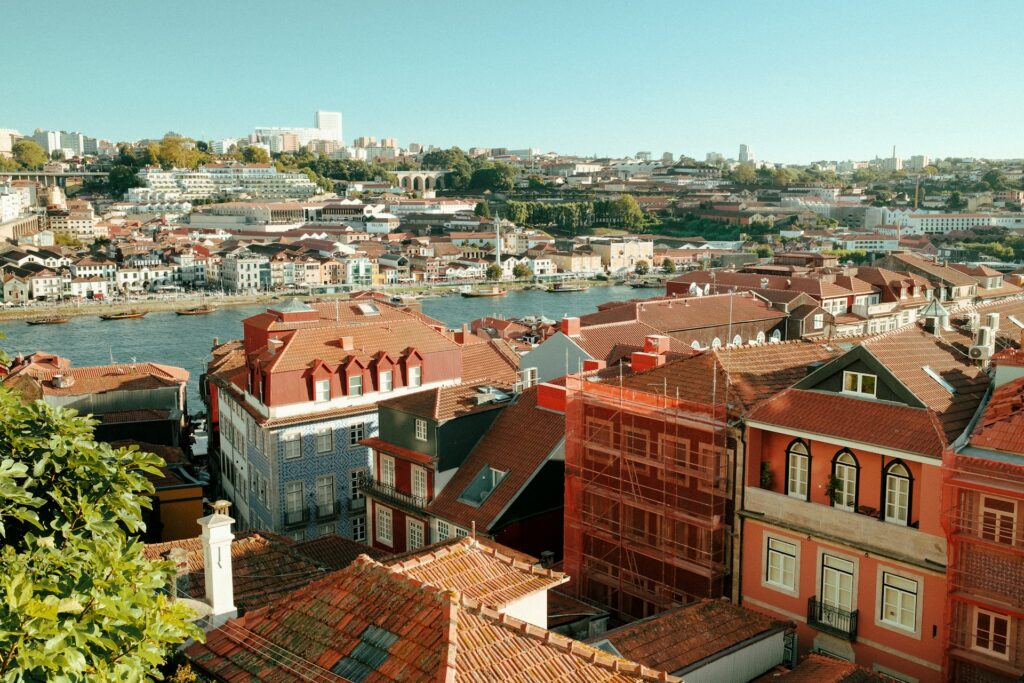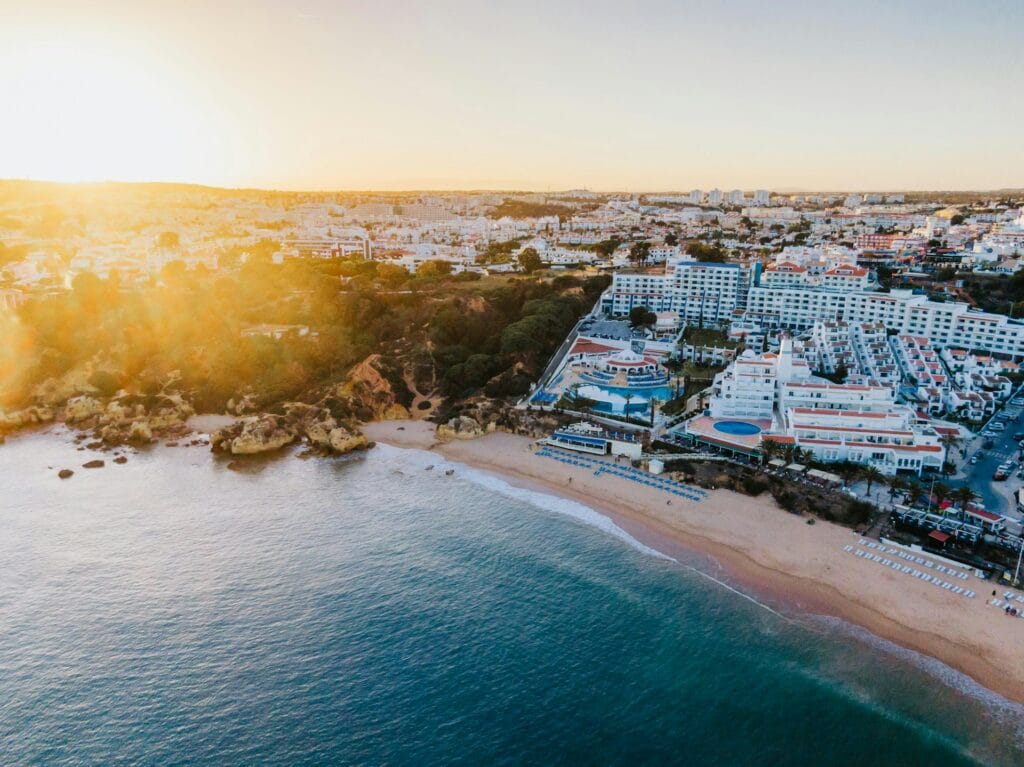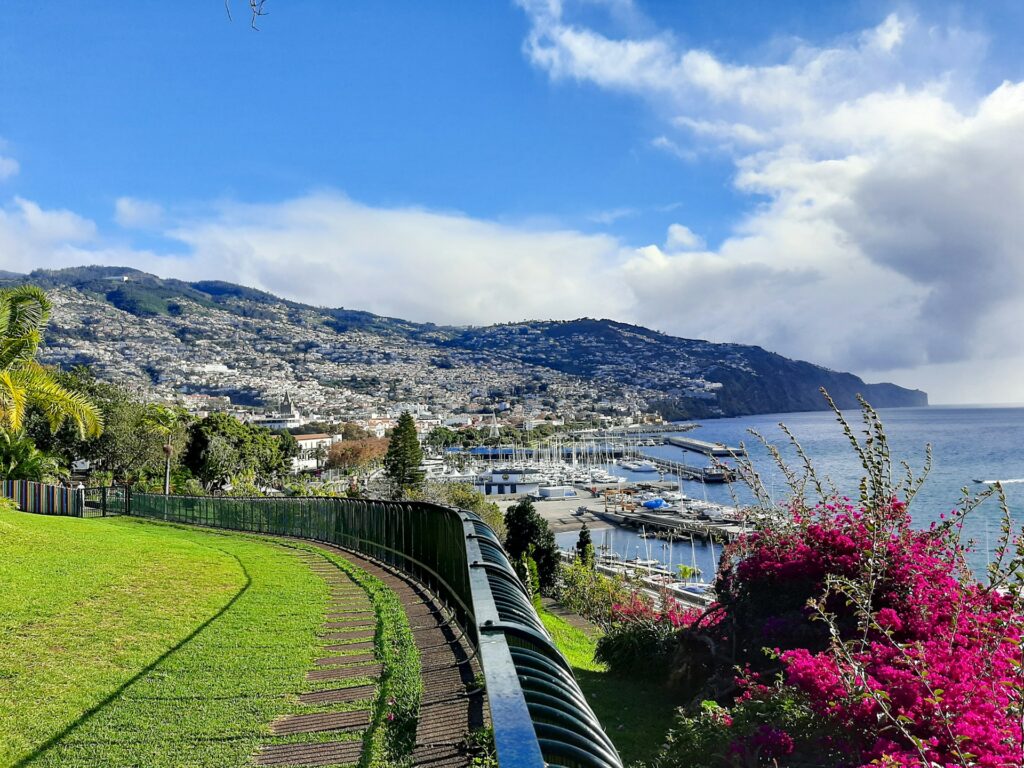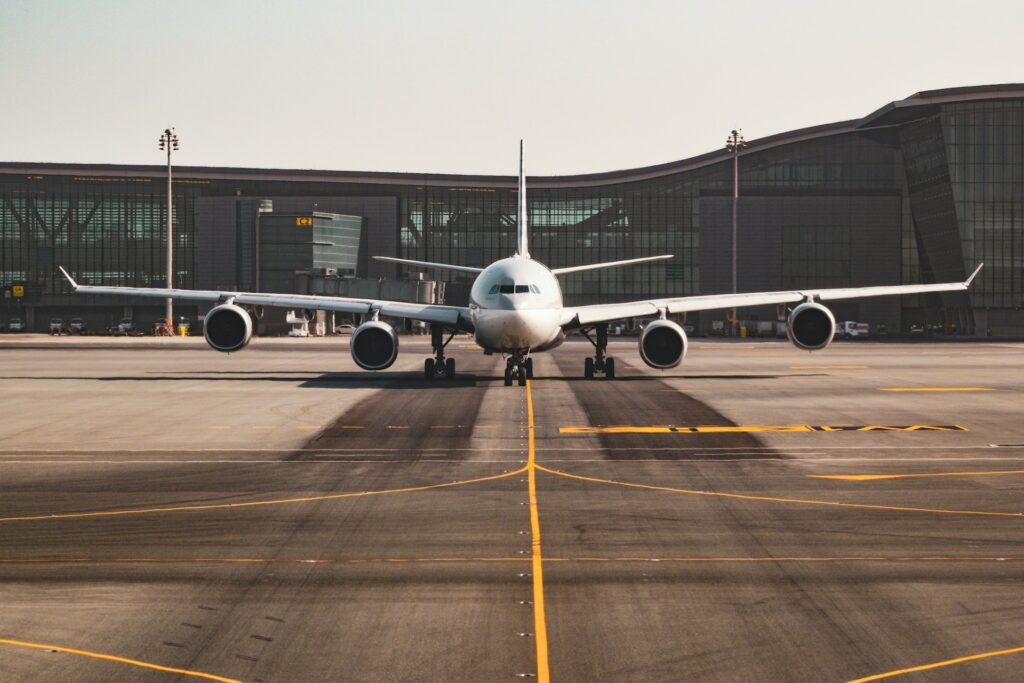Portugal is one of the easiest and most welcoming countries to travel to in Europe. It’s a favorite among tourists, retirees, digital nomads, and remote workers. One big reason? Portugal Airports are well-connected, easy to use, and located close to popular cities and towns.
With five main international airports and several regional ones, getting in and out of Portugal is a breeze. Whether you’re flying into Lisbon, Porto, or Faro, you’ll find the process smooth and traveler-friendly. Each airport offers its own unique access to different parts of the country – north, south, islands, or mainland.
In 2025, the number of foreigners living in Portugal reached 1,6M now hold residence permits. Easy access through Portugal Airports plays a big role in making relocation stress-free.
So, whether you’re planning a holiday, scouting retirement options, or just flying in for business, knowing how Portugal Airports work can save time and hassle. Let’s walk through what you need to know about each one from facilities to transport and beyond.
Lisbon Airport (LIS): Portugal’s Main International Hub
Lisbon Airport is the largest and busiest of all Portugal Airports. It’s located just 7 kilometers from the city center, which makes it quick and convenient for travelers arriving or departing from the capital. Officially known as Humberto Delgado Airport, it serves as the main gateway to Portugal from around the world.
This airport handles millions of passengers each year. It connects Lisbon with major cities across Europe, North America, South America, and Africa. Whether you’re arriving from Madrid, London, New York, or São Paulo, Lisbon is likely to be your first stop.
Lisbon itself was recently ranked the top European capital to visit in 2024, and the airport reflects that status. It’s modern, busy, and full of useful services.
What you need to know:
- Two main terminals (T1 and T2)
- T1 handles most international and long-haul flights
- T2 is used mainly by low-cost carriers like Ryanair and EasyJet
- Free shuttle runs between the terminals
- Metro line connects directly to the city
- Taxis and buses are available at the arrivals area
- Car rental counters are located near the arrivals hall
- Free Wi-Fi and multilingual signage throughout the terminal
If you’re flying into Portugal for the first time, Lisbon Airport gives a solid first impression. It’s clean, organized, and has everything you need to start your trip smoothly.
Official airport site: https://www.aeroportolisboa.pt/en/lis/home

Porto Airport (OPO): Northern Portugal’s Gateway
Porto Airport is the second-busiest in the country and a major part of the Portugal Airports network. Officially named Francisco Sá Carneiro Airport, it’s located just 11 kilometers northwest of Porto’s city center. It’s well-connected by public transport and known for being efficient, clean, and easy to navigate.
Porto is famous for its wine, old-town charm, and riverside beauty. If you’re heading to the north of Portugal at places like Braga, Guimarães, or the Douro Valley, this is the airport to use. The airport’s size is manageable, and security checks usually move quickly.
Many European airlines operate here, and it also serves seasonal transatlantic routes. Budget carriers are frequent, making it a favorite for weekend trips and short stays.
What you need to know:
- Only one terminal, serving all flights
- Metro station (Line E) connects airport to city center in 30 minutes
- Multiple bus lines also available
- Taxis are easily available outside arrivals
- Car rentals are located near the terminal
- Clear signs in English and Portuguese
- Plenty of cafés, shops, and duty-free stores
- Free Wi-Fi throughout the terminal
Porto Airport often ranks among Europe’s best medium-sized airports for customer satisfaction. It’s modern without being overwhelming and a great entry point for exploring the scenic north.
Whether you’re arriving for business, wine tasting, or a peaceful holiday, Porto Airport makes the experience smooth and welcoming.
Official airport site: https://www.aeroportoporto.pt/en/opo/home

Faro Airport (FAO): Southern Portugal’s Sunshine Hub
Faro Airport is the main gateway to Portugal’s southern region – the Algarve. It’s one of the most important Portugal Airports for tourists, especially during summer months. Located just 4 kilometers from the city of Faro, it serves the region’s popular coastal towns like Lagos, Albufeira, Vilamoura, and Tavira.
The airport is smaller than Lisbon or Porto, but well-organized. Most flights here are short-haul, arriving from cities across the UK, Ireland, Germany, and France. It’s a favorite for sunseekers, retirees, and families heading for beach holidays.
Faro Airport gets busy in peak season (June to August), so expect longer queues. But during off-season months, it’s calm and quick to navigate.
What you need to know:
- Single terminal handles all flights
- Buses and taxis are available right outside arrivals
- Car rental desks are located near the terminal
- No direct train from the airport, but buses connect to nearby stations
- Free Wi-Fi and air-conditioned waiting areas
- Compact layout, easy to walk through in minutes
- Most staff speak English, helpful for tourists
- Duty-free shopping and a few cafés available
For anyone planning to explore the Algarve region, Faro Airport is the most convenient arrival point. Whether you’re visiting for golf, beaches, or retirement scouting, this airport gives you quick access to the south.
Official airport site: https://www.aeroportofaro.pt/en/fao/home

Madeira Airport (FNC): Scenic Flights and Island Charm
Madeira Airport is your main point of entry to the lush, volcanic island of Madeira. Also known as Cristiano Ronaldo International Airport, it’s located near the city of Funchal. Among all Portugal Airports, this one stands out – mostly for its dramatic runway views and scenic approach.
It connects Madeira with mainland Portugal, several European cities, and seasonal routes from farther away. The airport is modern, but not too big. It’s designed to handle busy tourist months while keeping a relaxed island vibe.
Due to its windy weather and short runway, landing here is a little famous. But don’t worry it’s completely safe and flown by trained pilots every day.
What you need to know:
- One terminal serving both domestic and international flights
- 20-minute drive to downtown Funchal
- Buses and taxis available right outside
- Car hire services in the arrivals area
- English spoken at most service points
- Few but good restaurants and shops
- Baggage and customs usually move quickly
- Free Wi-Fi and comfortable waiting lounges
Madeira is popular with hikers, honeymooners, and retirees looking for quiet island life. Flying into this airport sets the tone – breathtaking nature, relaxed pace, and friendly people.
So if your Portugal adventure takes you off the mainland, Madeira Airport is your go-to entry point.
Official airport site: https://www.aeroportomadeira.pt/en/fnc/home

Ponta Delgada Airport (PDL): Gateway to the Azores
Ponta Delgada Airport connects the Azores archipelago with mainland Portugal and other European cities. It’s officially called João Paulo II Airport and is located on São Miguel Island – the largest island in the Azores. Among Portugal Airports, this one is your launch point into the Atlantic’s green paradise.
The Azores are known for volcanic lakes, hot springs, and peaceful village life. This airport makes that experience accessible without much stress. It’s small but efficient, welcoming visitors looking for quiet nature escapes or a slower pace of life.
Direct flights are available from Lisbon, Porto, and several seasonal European destinations. In summer, there are even a few transatlantic flights.
What you need to know:
- One small terminal handles all flights
- Close to downtown Ponta Delgada (just a 10-minute drive)
- Bus, taxi, and car rental services available outside arrivals
- Simple layout and short walking distances
- Most staff speak English and are helpful
- Good local cafés and souvenir shops inside
- Security and baggage claims are usually quick
- Free Wi-Fi and helpful signage throughout
If you’re heading to the Azores for hiking, whale watching, or just to unplug, this is your first stop. The airport sets the mood – relaxed, clean, and surrounded by nature.
For a different side of Portugal, Ponta Delgada Airport delivers comfort and calm from the moment you land.
Official site: https://www.aeroportopontadelgada.pt/en/pdl/home

Airlines That Use Portugal Airports
Portugal Airports are busy hubs for both full-service and low-cost airlines. You’ll find major international names like Lufthansa, British Airways, Air France, and KLM flying in and out regularly. From the U.S., TAP Air Portugal and United Airlines offer direct routes to Lisbon and Porto.
TAP Air Portugal is the country’s flagship airline. It has a strong presence at Lisbon Airport and connects Europe, the Americas, and Africa. For budget travelers, Ryanair, EasyJet, and Transavia offer frequent flights across Europe, especially to Faro and Porto.
In the summer, more seasonal routes open up, making beach towns and islands easier to reach. Azores Airlines and SATA serve the island airports, keeping mainland Portugal linked to Madeira and the Azores year-round.
So whether you’re flying in for a vacation or heading home, Portugal Airports give you plenty of choices with trusted airlines.
What to Expect on Arrival
Arriving at Portugal Airports is usually a smooth experience. Most terminals are modern, clean, and well-organized. English is widely spoken, and signs are easy to understand. Whether you land in Lisbon, Porto, or Faro, you’ll find helpful staff and clear directions from the gate to passport control.
If you’re coming from outside the Schengen Area, you’ll go through passport checks. For EU or Schengen travelers, the process is even quicker. Baggage claim areas are easy to reach, and luggage usually arrives without long delays.
After collecting your bags, you’ll walk into the arrivals hall. This is where you’ll find currency exchange booths, SIM card counters, car rental desks, and taxis. Public transport is usually nearby, with buses or metro lines within walking distance.
Portugal was ranked the 7th safest country in the world, and that safe, welcoming tone starts at the airport. Expect free Wi-Fi, clean restrooms, and cafés for a quick snack after your flight. Overall, Portugal Airports aim to keep things simple – no chaos, just a calm welcome to the country.
Public Transport, Education, and Living Appeal
All major Portugal Airports have metro or bus links to the city. Lisbon and Porto have easy-to-use metro lines. In Faro and Madeira, you’ll rely more on taxis or rentals. Avoid accepting rides from drivers inside the terminal. Use registered taxis or ride apps like Uber.
Portugal is not just a great place to visit. It’s also a great place to stay. The country ranked 34th for education, above Spain and Italy.
Add in top safety rankings and an affordable lifestyle, and it’s no wonder so many foreigners choose to live here. And with so many easy entry points, Portugal Airports make it even more accessible.

Want to Make Portugal Your Home?
If your trip to Portugal has you thinking long-term, you’re not the only one. We’ve met plenty of travelers who came for a short visit and ended up calling Portugal home. Whether it’s the relaxed pace, the food, or the weather, this country has a way of pulling you in.
Real estate is often the next step for many of us. Maybe you’re dreaming of a holiday flat by the coast or planning a peaceful retirement. Or perhaps you see Portugal as a smart investment with long-term value. Whatever your reasons, buying or renting property here doesn’t have to be complicated.
That’s where our immigration partner, Portugal Residency Advisors can help. With strong airport links, peaceful neighborhoods, and a welcoming vibe, Portugal makes it easy to settle in. From arrival to ownership or your first rental, the path is clearer than you might expect.
Looking to Invest in Portugal?
Explore our newest listings below!
Frequently Asked Questions About Portugal Airports: What Travelers Need to Know in 2025
How many international Portugal Airports are there?
There are five major international Portugal Airports: Lisbon, Porto, Faro, Madeira, and Ponta Delgada. They connect the country to Europe, the Americas, and more.
Which Portugal Airport is best for the Algarve region?
Faro Airport (FAO) is your best choice. It’s just minutes from popular Algarve towns like Albufeira, Lagos, and Vilamoura, with plenty of direct European flights.
Do Portugal Airports offer free Wi-Fi?
Yes, all main Portugal Airports provide free Wi-Fi. Just connect to the public network and follow the on-screen instructions. It’s fast enough for email and browsing.
Is English spoken at Portugal Airports?
Yes. Most airport staff speak English, especially in Lisbon, Porto, and Faro. Signs are also bilingual, making it easy for non-Portuguese speakers to get around.
Can I rent a car directly at Portugal Airports?
Absolutely. Major rental companies operate at all international Portugal Airports. Booking online in advance is recommended, especially during peak travel seasons.
How far is Lisbon Airport from the city center?
Lisbon Airport is just 7 km from the city center. You can get there quickly by metro, taxi, or ride-share, usually within 20 minutes.
Are taxis available at Portugal Airports 24/7?
Yes, taxis are available around the clock at all major airports. Just follow the signs to the taxi rank outside the arrivals terminal.
Which airlines use Portugal Airports regularly?
TAP Air Portugal, Ryanair, EasyJet, Lufthansa, and many others operate frequent flights. Routes depend on the season and airport.
Are there lounges in Portugal Airports?
Yes. Lisbon, Porto, and Faro all have lounges, some open to economy passengers for a fee. They offer snacks, drinks, and quiet space.
Can I fly directly to Portugal from the U.S.?
Yes, direct flights operate from U.S. cities to Lisbon and Porto, mainly through TAP Air Portugal and United Airlines. Check seasonal schedules for updates.